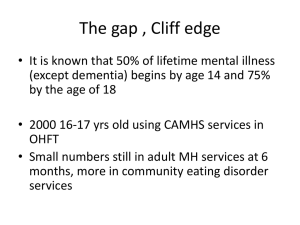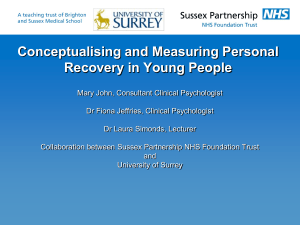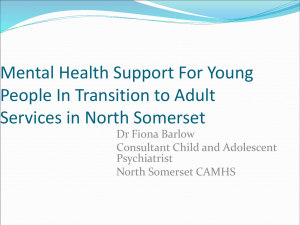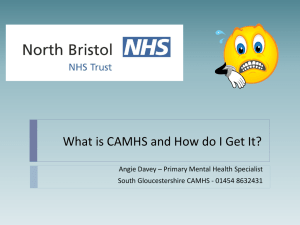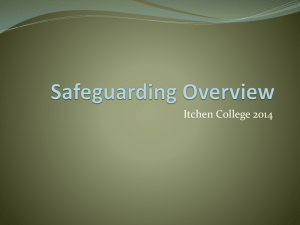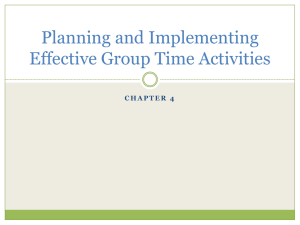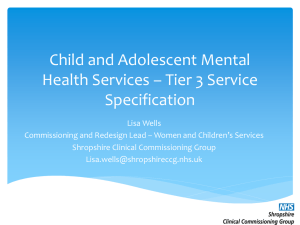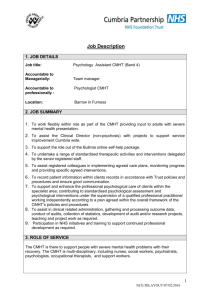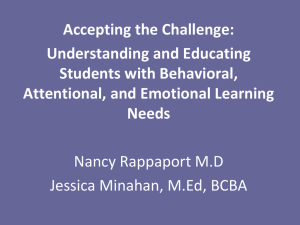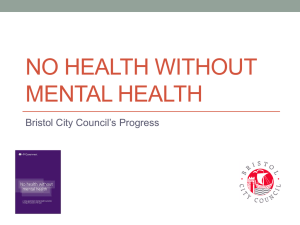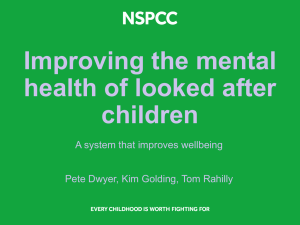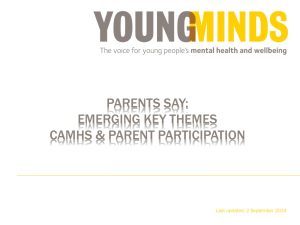a Pilot Project
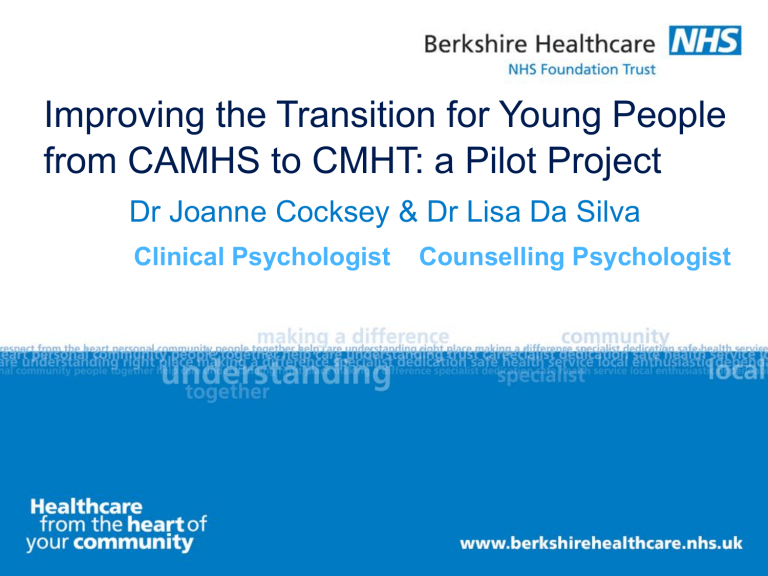
Improving the Transition for Young People from CAMHS to CMHT: a Pilot Project
Dr Joanne Cocksey & Dr Lisa Da Silva
Clinical Psychologist Counselling Psychologist
Background
NATIONAL
• Identified need for an improvement to the process of transition for young people from
CAMHS to CMHT (Children and Young People in Mind: National CAMHS Review,
2008; No Health without Mental Health, 2011).
• In London only 4% of young people reported a good experience of transition, with many disengaging from services (Singh et al., 2008).
LOCAL
•
In Berkshire, the Windsor, Ascot & Maidenhead (WAM) locality, service user feedback indicated that young people and their parents experienced the transition from child to adult services as challenging.
•
Differences in ways of working and expectations between children and adult services led to service user distress/confusion, complaints, and negative inter-service communication.
• A lack of liaison and care planning between CAMHS and CMHT resulted in disjointed and late transitions and extended out of area placements.
Objectives and opportunities
• Improve the quality of care for young people and their families plan transitions around individual client needs.
• Ensure a more seamless client experience.
• Improve the engagement of young people with complex mental health problems in transition.
• Provide peer support and focused learning opportunities for parents/carers .
• Bringing together existing resources in CAMHS and CMHT to more effectively manage transitions:
– Enhancing collaboration and sharing knowledge between professionals/teams
– Decreasing costs (reduce replication of input and time in out of area placements)
The pilot
• CAMHS – CMHT joint meetings
• Transitions Group
• Parents’ Group
CAMHS-CMHT meeting
• Monthly meeting between CAMHS and CMHT Team Managers,
Leads and Senior Clinicians. Young people are discussed in the meeting from when they turn 17, leading to improved transition planning and early joint care co-ordination.
• Since the start of the project approximately 52 young people have been reviewed in the meeting. Of these, 14 have been/are being transitioned to CMHT. Of these 2 disengaged once transitioned to the CMHT.
• In the year prior to the start of the project there were 3 complaints regarding the transition from CAMHS to CMHT. Since the project, no complaints have been received from this cohort.
Parents’ Group
• All parents, relatives and carers of the above cohort, focussing on peer support and skills review/learning.
Transitions Group
• Clients aged 17 and 18 years of age who meet criteria for CMHT or just below.
• Focuses on the development of skills to manage emotional and psychological difficulties, and provides peer support.
• Modular with a range of topics: Self-care; Anxiety; Low mood;
Identity; Self-esteem; and Relationships.
• Weekly for 1½ hours away at non-mental health premises.
• Facilitated by a CAMHS and a CMHT psychologist .
• Individual reviews at the end of each module.
Transitions Group
4 to be reassessed post crisis
37 young people considered
10 discharged
6 to specialist services
17 offered
6 accepted
11 declined
Outcomes of Transitions Group
Measures
• Revised Child Anxiety and Depression Scale (RCADS)
75
74,5
74
73,5
73
72,5
72
71,5
Time 1 Time 2
Outcomes of Transitions Group
Measures
• CORE
2,1
2,05
2
1,95
1,9
1,85
Time 1 Time 2
Outcomes of Transitions Group
Measures
• Education and Employment
6
5
4
3
2
1
0
Time 1 Time 2
Outcomes of Transitions Group
Measures
• Feedback
7
6
5
4
9
8
1
0
3
2
Enjoyed the group
Group helpful
Learnt something new about myself
Material relevant
Confident to make changes & manage difficulties
# sessions right
Liked venue and facilities
Likert scale: 1 Completely disagree; 10 Completely agree
Challenges
• Majority of those offered the group declined it (11 of 17) = low numbers o Timetable issues o Anxiety about groups
• Heterogeneous group
• Repetition of previous input
• Engaging parents
Conclusions
• Addressing an identified need for this age group.
• Enhanced joint working and better communication between CAMHS and CMHT.
• Improved care planning and joined up preparation for transition.
• Reduced likelihood of disengagement.
• Enhanced service user experience.
